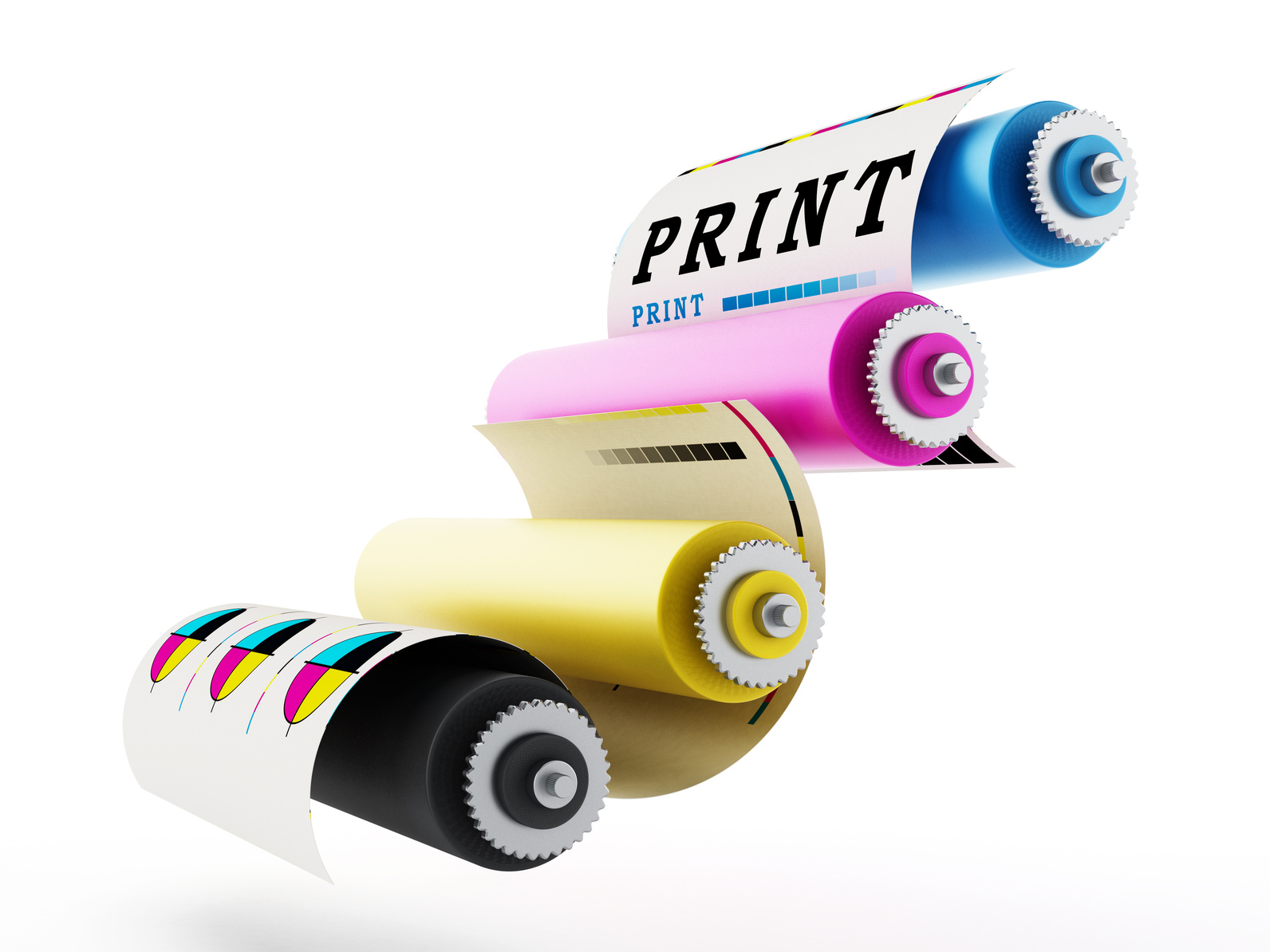How to Make a Great Digital Consulting Logo
Posted on September 15, 2017 by Logo Design Tips and Tricks

If you’re trying to design a digital consulting logo, it helps to have a few tricks up your sleeve.
There are a variety of ways to use basic human psychology to design an appealing and engaging logo for your business.
If you make strong choices, you could make millions more than your weak-logo-owning competitors. Make weak choices, and you’ll be just another face in the crowd.
So here’s how to do it the right way.
Do These Colors Work?
A lot of people think of colors as a matter of personal choice. And while everybody has a favorite color, this shouldn’t be the primary consideration when it comes to your brand.
One of the reasons McDonald’s has a successful logo is the effect of colors on the human mind. Just combining red and yellow has been proven to make people more hungry.
You work in digital consulting. So you may not think there’s much you can learn from McDonald’s. But the truth is that colors will always impact the way potential customers view your company.
You probably will want to communicate objectivity and seriousness with your brand. Nobody wants their consultant to make purely emotional decisions: you should use a logo that reflects the desire of your customers.
To do that, we recommend combining blue and gray in your logo.
What’s In A Shape?
Colors have a strong impact on your brand. So, too, do shapes.
It goes without saying that a digital consultant will use different shapes in their logo than an erotica publisher. But what can you do to give your logo the extra punch it needs?
The answer is: design something sleek, minimalist, and familiar. Perhaps the best digital consulting logo on the web comes from Centric Digital.
Centric Digital’s logo subtly represents the thrill of a retweet. That alone makes it one of the strongest logos in the game.
Does This Fit My Brand?
There are plenty of great logos out there in your industry. You can, and should, take inspiration from these logos. But there’s a difference between being inspired by a logo and making it the basis of your own.
You should not design a logo without considering your own brand. If you don’t have a coherent brand identity, yet, it’s time to articulate it.
It’s a lot easier to build a logo to fit your brand than it is to build a brand to fit your logo. So before you know what your logo is, make sure you know who you are.
Am I Paying Too Much For My Digital Consulting Logo?
There are a lot of graphic designers out there. A professionally designed logo can cost you thousands of dollars.
Instead of bankrupting your company designing your logo, you should make it for free with us.
If you want to get started on designing your free logo, you should take our tutorial. Then, when you’re ready, get registered for our service!
We look forward to helping your brand succeed.
3 Benefits of a Professional Dental Logo Design
Posted on September 15, 2017 by Logo Design Tips and Tricks

A good logo is more than a picture to slap onto stationary or billboards.
Your logo is a symbol that can help people to remember your business and even stir emotions. It only works that way if gets designed properly.
While you can DIY your own logo design, you’re likely to end up with something that you don’t love and customers don’t respond to. A professional dental logo design offers benefits that a DIY version can’t match.
Let’s dig into three of those benefits.
Simplicity
There’s an almost overwhelming impulse to try and cram as much information as possible into a logo. It’s understandable since logos are often the only thing people remember about a business.
It’s also a rookie mistake. A good logo needs to scale down and still be immediately recognizable on a business card. As often as not, intricate designs become a blurry mess at that scale.
Consider the logos of the brands you see on a regular basis. Are they complicated and overloaded with text? Almost certainly not. In fact, they’re probably dominated by basic shapes and a minimum of words.
That very simplicity makes them easy to remember and, equally important, easy to identify in a store.
A professional logo designer will help to guide you toward a simpler logo that is memorable, conveys your brand and still scales.
Innovative Dental Logo Design
Designing your own logo is a seductive option. Who knows your business better than you? The problem is that, while you know your business, you probably don’t know anything about graphic design.
A good graphic artist brings more than computer skills to the table. They bring all of their industry experience and knowledge about design trends. They also bring their training in historical artistic movements.
This allows them to innovate with your logo in ways that you couldn’t or wouldn’t think to do.
Take the logo for Louis Pelletier Denturologiste as an example. Rather than use the basic smile which is almost a cliche in dentistry, their dental logo design takes a step toward the abstract.
It evokes the impression of a smile, without replicating the literal smile we’ve all seen dozens of times before. The real genius of the design is that it doesn’t abandon the smile, just gives it a fresh spin.
Eye for Color
There’s an entire psychology to the effect of color on people’s emotional states.
A professional designer may not be an expert on the science of it. Even so, they’ll absolutely have a background in color theory and its psychological impact.
A dentist might pick red as the dominant logo color because it draws attention. A designer will likely avoid red for a dental logo design because it may provoke unconscious feelings of aggression.
A professional designer will draw on that color knowledge to help you develop a logo that sends the right emotional message.
Parting Thoughts
A professional dental logo design isn’t an absolute business or marketing requirement. You can DIY a good logo or revise a so-so one down the road.
Starting with a professional dental logo does offer benefits. You generally get a simpler, more innovative design that employs good color theory. It’s likely to hold up over time and perform better in its job.
Want to share your thoughts on the topic, leave a comment below. Have some questions about logo design, contact Online Logo Maker today.
5 Tips for Perfect Logo Printing
Posted on September 15, 2017 by Logo Design Tips and Tricks

Taking a little time to brag about yourself or show off your company, are you?
When it comes to logo printing you need it to be the best. After all, the prints are the greatest representation of you, your style, and your message.
Use these tips to create perfect prints of eye popping, head turning logos for you or your company.
1. Decide Your Product
Before you can dive into making your logo look just right you have to decide where it will be used.
Are you creating a statement for a billboard? Making t-shirts for an upcoming event? Revamping your work ID Card or business card?
Taking these options into consideration will affect how you design your logo.
Resources on the web make it as easy as possible for you to get started.
The people at IDCard even offer free design and same day shipping!
2. Personalize And Create Your Design
Time to show off and be unique!
Websites that specialize in logo printing make it easy for you start from scratch and get exactly what you want.
The options for design are endless and things to consider include text, graphics, shapes, symbols, images, color, size, and style.
Have fun with it! Plan, design, share, revamp and do it all over again to create different options for yourself.
3. Bleeds
Now some technical work. Don’t worry, this isn’t about to get gory.
When printers refer to the the images on a page, a term they use is “bleed”.
You’re probably thinking, well it sounds bad.
Is it?
When you send your logo out for printing, the images and text that you choose need to be a certain distance away from the edge of the page.
If it’s not? The printer may have to resize your logo, change the size of the paper, or make other adjustments.
After all the hard work you put into designing, do you really want someone else touching, moving, and resizing? I’m guessing not.
Avoid this conversation with the printer by making sure your logo follows proper bleed guidelines. They apply to every product you can dream about printing on.
4. Smooth Conversions
Have you ever created something in a document and then tried to copy and paste it somewhere else only to have all of your margins shifted, images re-layered, and font changed? *cringe*
Thankfully, there are suggestions that can help you avoid these problems.
- Create and save your artwork in 300 dpi. Anything lower and you run the risk of having blurry prints.
- Use the correct color scale. RGB (red, green, blue) is best for web materials while CMYK (cyan, magenta, yellow, black) is best for printed material.
- See Bleeds from above.
5. Logo Printing Should Not Be a Rushed Job!
Time can not be stressed enough. Proofread your design, talk with the printer when the job is sent over, and request print proofs.
Nothing would be worse than ordering 500 new business cards only to find out that you entered your phone number incorrectly.
Get started now so you and your company can start printing the perfect logo!
5 Ways Tony Robbins Can Improve Your Life Coach Logo
Posted on September 15, 2017 by Logo Design Tips and Tricks

Tony Robbins has helped billions of people over the last thirty or so years. From books to seminars, the man has inspired, helped, and coached normal, everyday people to achieve the success they never thought possible.
When you want or need something to change in your life, Tony Robbins is what you type into the YouTube search engine box.
Don’t wait for other people to tell you what to do. Grab life by the horns, make your own rules.
He seems to know what he’s talking about. He’s worth half a billion dollars.
If you’re getting into the life coaching game and aspiring to have your own fortune, start with your life coach logo.
Today, we’re talking about your logo and how it impacts your brand.
His Life Coach Logo
Look at Tony Robbins and how he dresses. His outfits are simple, as is his website and logo.
His logo is basic yet bold and clear.
When you’re trying to come up with your life coach logo, think about your message.
What do you represent? What do you want people to take from it?
He Makes It Easy
Look at the colors he uses. Black and white. Simple yet elegant.
Bold. He typically wears dark colors.
This helps keep people focused and not distracted by what he’s wearing and the same goes for his website.
This color scheme symbolizes both balance and simplicity.
Isn’t that what every life coach should be preaching? Americans’ lives have become so convoluted and bogged down with stress and material possessions they can’t even decide what matters to them anymore.
If you want people to remember you and your life coach logo, go with a simple color scheme that conveys the message you want people to associate with your name.
Here’s another way to look at it. If you had your logo printed on 2018 daily planners, would anyone buy them?
Make Your Logo Easy to Remember
Use an easy to read font. Make your logo stand out but don’t make it hard to decipher, as this will make it forgettable.
Most coaches use their name as their life coach logo, just like Tony Robbins.
A great logo doesn’t need to be a symbol. However, if you want to use something everyone knows, you can definitely make it work.
Play around with symbols as well as your name to find what works best for you and your brand.
Your Voice
Right around the time you’re working on your life coach logo, you want to be thinking about your brand. Not just that, you want to compare it to the logo and how they match up.
Establish what kind of coach you want to be. Establish a logo. Make sure they work together.
Tony Robbins came from a broken home and worked hard to get where he is today. A simple man with a simple message and a plain, yet bold logo.
Why can’t you do the same? We know exactly where you should start.
Take your inspiration from this post and jump over to our free logo maker and give it a try.








